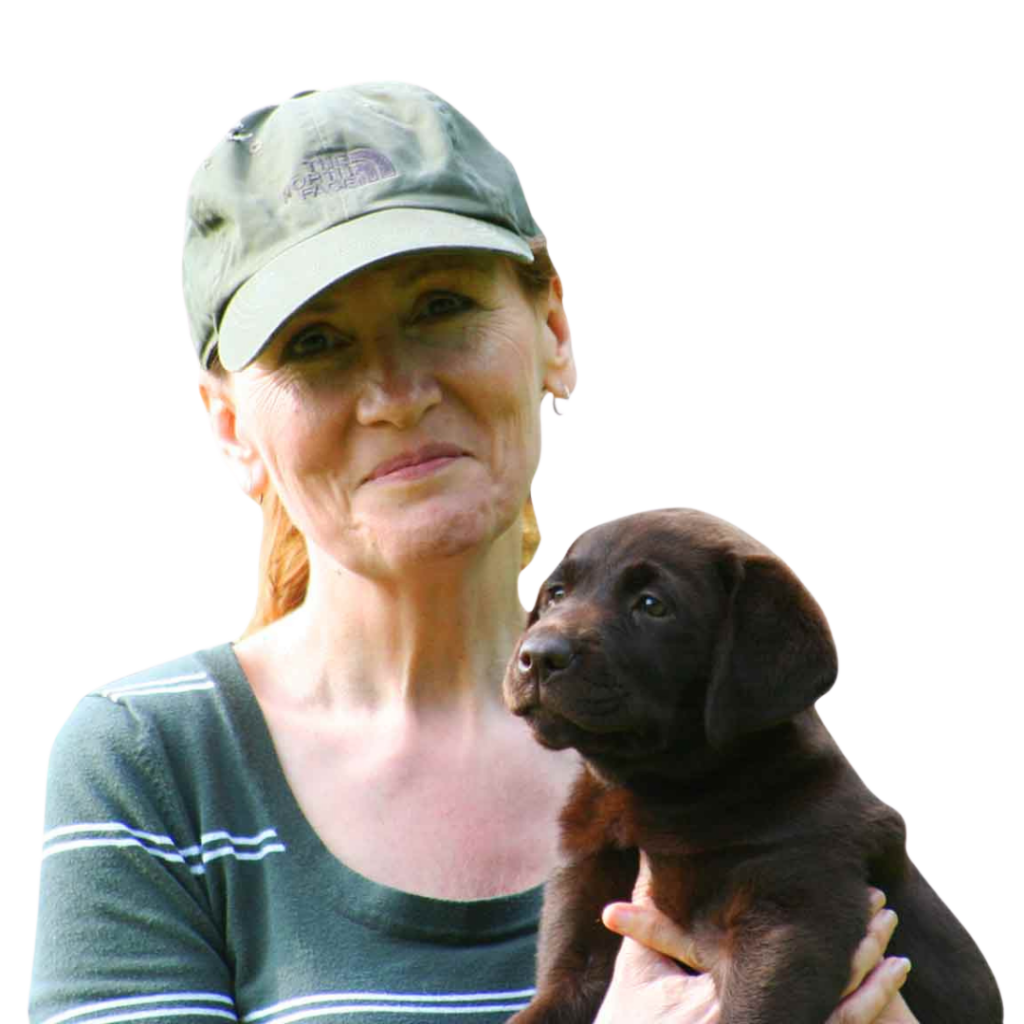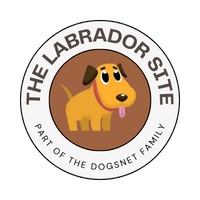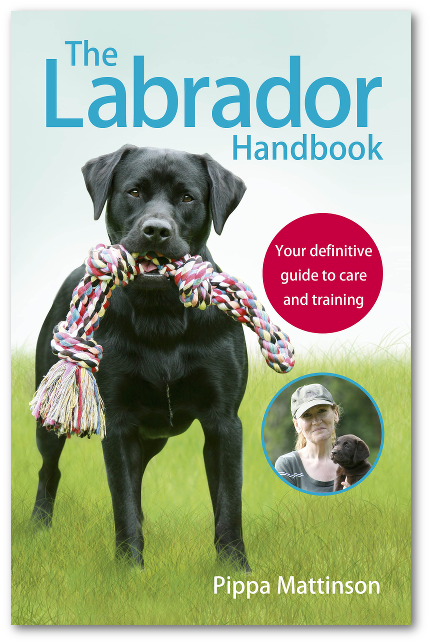Labrador Puppy Happiness Unleashed: 10 Must-Know Tips for Pet Parents
A happy Labrador puppy is a young dog that feels safe and secure. Although playing wildly with your over excitable companion is great fun for a while, ensuring that life is calm and stable is actually the key to keeping your puppy happy as they grow and develop.
Your happy Labrador puppy will have enough space to play, explore and adventure into the world when outdoors and supervised by you. But they will have a limited safe area in the home, which enables them to be comfortable and secure. Positive reinforcement training uses rewards and encourages bonding, and is one of the best ways to make your puppy happy. The happiest dogs are those with confident, consistent routines when it comes to their food, socialization and the general rules of the home.
Contents
- Safe places and calm environments
- Building good routines
- Socialization and rewarding training
- Learning to be alone
Happiness is a Balancing Act
Your job is a bit of a balancing act. Keeping your little one happy, while ensuring that he is educated in the ways of our curious human world, and that he learns to behave himself Here are a few tips to help you along the way. In addition to food, love and protection, there are 10 things that you’ll need to provide, in order to have a truly Happy Puppy!
1. Safe Places = Happy Puppies
Puppies enjoy being close to their grown ups. This is natural and normal. It makes them feel safe. Puppies also feel safe if they have a den, a place of safety, like the whelping box or nest where they were born, to rest in when they are on their own. Recreating this ‘nest’ in your own home takes a little time because your home seems strange and new to the puppy at first.
Many people use a crate for their puppy’s new den. It will take several days for the crate to feel like ‘home’. But you can hurry that process up by leaving the door open all day and leaving food and nice toys in there for your puppy to find.
2. Happy Labrador Puppies Have A Calm Environment
Little puppies respond to and reflect the atmosphere around them. If you or your children are very excited, your puppy will get excited too. He may get very overexcited, which is when biting can get very out of hand. Puppies find it quite hard to ‘calm down’ and so it is important to try and be fairly calm around your small puppy.
Of course, there are bound to be times when, despite your best efforts, your puppy gets a little too over-excited. But, learning how to deal with this can help calm things back down.
3. Outdoor Time To Potty
I get a lot of questions from people that are struggling with potty training because they are expecting a new puppy to go too long without a wee during the day. Sometimes two or three hours. Some eight week old puppies will empty their bladder in the garden, come indoors and wee again just 15 or 20 minutes later! This is very annoying, but it is a short-lived phase.
In the meantime, you’ll experience success much faster, if you take your puppy out very frequently to begin with. Especially for the first two weeks when your puppy’s ability to wait, is very limited.
4. Restricted Access
Many people find it hard to cope with their puppy simply because they are giving him access to too large an area of the family home. He has no chance of learning to be clean if he cannot be watched constantly by a family member and is far more likely to have accidents on carpets, than on hard floors. That’s because puppies like to pee on soft surfaces.
He will also be constantly in trouble for chewing things he should never have been able to reach. Baby gates are a brilliant way of restricting very small puppies to a fairly small designated part of your home with washable floors. The puppy can then be gradually introduced to more rooms as they mature.
5. The Right Feeding Routines
Puppies often have sensitive tummies. Especially in the first few days and weeks in their new home. Most Labrador puppies are greedy and will eat large meals. The quantities on food packet are daily rations and should be divided into at least four portions to begin with.
It’s tempting to cut your puppy down from four meals to three, too soon. And the result is can be a nasty attack of diarrhea, although of course there are other causes of upset stomaches too! Be kind to your puppy’s tummy and feed him little and often. He may look hungry after a meal, but he’ll soon forget about it after a cuddle and trip into the garden.
6. Socialization Builds A Happy Labrador Puppy?
Puppies need to be out and about. There is a small period of time during which puppies can easily accept new experiences. And after which they become fearful of strangers, strange objects, and strange experiences. This unique time slot is called the window for socialization, and it is all but closed before the puppy is 14 weeks old. So you need to get your puppy out and about, meeting all kinds of people, vehicles, shops, machinery, and so on.
Most experts recommend that you don’t put your puppy down on the ground until his vaccinations are complete, but you can carry him in your arms, or in a strong shoulder bag. If you don’t take your puppy out before this window closes he may be somewhat fearful for the rest of his life. So don’t be tempted to cut corners with this one.
7. Positive Reinforcement Leads To Happiness!
Nowadays we train dogs using positive reinforcement. Essentially this means with rewards. These rewards can be anything he enjoys, from toys, to food, to simply running around. But puppies need to be shown how to earn rewards the right way. So that we get the right responses from them. It is all too easy to reward your puppy for doing the wrong things. Lots of puppies learn to bark to get attention for example or to jump up to get a stroke.
There are lots of games you can play with puppies to help them learn how to earn rewards. Let the puppy know what you like them doing (with a marker word like YES) and follow it up with a treat. You can start rewarding your puppy like this, for making eye contact with you, right from the very first day.
8. Learn To Be Happy Alone?
All companion dogs need to be alone at times. Even if you don’t go to work, your puppy needs to learn to cope with your absence from time to time. And the best time to learn this skill is when he is small. As soon as your puppy has settled in to his new den, after the first few days it is time to start leaving him alone for short periods of time.
Pull up a chair and start by getting the puppy used to being shut in the crate with you next to him. When he is happy to be crated while you are there, you can start leaving him for very short periods of time. Just a few seconds to begin with.
9. Time Off The Leash!
Small puppies have a powerful following response – I call this the safety response because they do it to feel safe. If you put and eight week old puppy on the ground and walk away, he will follow you. If you keep your puppy on a leash for the first six months of his life, when you let him off he will no longer have this following reflex, and you will have wasted a great opportunity to establish this good behavior. Check out below for a demonstration, on teaching the puppy recall.
And don’t forget to let your new little puppy off the lead whenever there is a safe place to do so. So that he can learn to follow in your footsteps as you lead the way in exploring the great wide world. Obviously this needs to be done in a very safe space. Later on when you take your puppy into a more distracting environment, you should attach a trailing line to their harness for safety.
10. Your Happy Labrador Puppy Has Consistency
Puppies need consistency. If your little one is allowed on the sofa today, he may think he is allowed on the sofa tomorrow. If you feed him from the table today, he’ll beg at the table tomorrow. Decide what your rules are, and work out how to achieve them.
Find out everything you can about how puppies learn so that you can teach your puppy how to live in our world, with love and kindness. Not only will you have a very Happy Puppy, but you’ll spend many happy months and years, looking after him.

Free Labrador Updates!
Get my training tips, news, reviews, and the latest from The Labrador Site delivered to your inbox



Wow, I never knew that feeding puppies very little but very often was the way to go. I had previously assumed that feeding them as much as possible was always the better choice so they have more energy whenever it’s playtime, but your article definitely made sense when it talked about the after-effects of overfeeding. I’ll definitely keep these tips in mind when I find a pet breeder that can get me my first labrador puppy.
I like your tip to train the puppy to sit when he or she wants something and to reinforce that habit with rewards. My niece’s birthday is coming up and she’s always wanted a Labrador-Retriever. We’ve never owned a dog, so your tips will be very helpful.